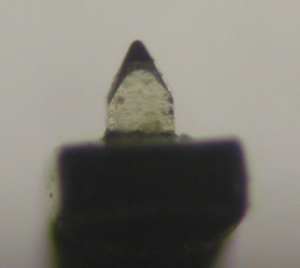How to Clean Your Cartridge Stylus Needle and Maintain Peak Performance
A Clean stylus needle will prevent performance degradation and lengthen the life of your records. This is obviously an important aspect of turntable maintenance but how is it best carried out?
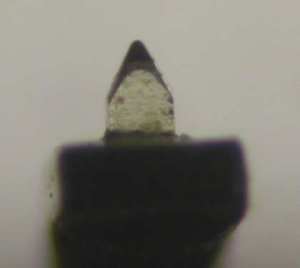
Cleaning your Stylus needle can have dramatic effects
A client recently sent us an £800 cartridge, requesting it to be checked for a manufacturing fault because it had suddenly ceased to perform its usual magic. We duly had the cartridge inspected by the importer, only to be told that it was in fact fine. The problem was due to a very small but tenacious lump of gunge which had attached itself to the stylus needle. Once removed everything behaved perfectly.
This story is an example of where performance degradation was dramatic. However, the same thing can occur slowly over time on a stylus which is not maintained well, in which case it‘s not so easy to recognise the change in performance.
To understand the best methods of stylus cleaning without causing damage, you want to hear from a seasoned authority in the field. Credit for the below information must go to John Burns who distributes Dynavector cartridges in the UK. John has seen and tested countless used cartridges for many years since his early days of working for Linn and then starting up on his own. He also has complete access to cartridge manufacturers and has developed an intimate knowledge of the subject.
The following information is provided in good faith and we cannot take responsibility for any damage that may result – if you are in doubt about some of the more tricky aspects then it may be wisest to get the job done by a dealer you trust.
Ensure Records are Truly Clean
At risk of stating the obvious, it is essential to clean records properly. The story above was almost certainly caused by a record purchased from a 2nd hand shop which had a small smudge of something tacky on the surface. Either way, only liquid cleaners like L’Art Du Son will remove this sort of contamination and even then unusual contamination may need specialist treatment.
Clean Your Stylus Needle Using Appropriate Methods
Clean your stylus tip regularly with a good stylus cleaning fluid and brush. How often, depends on how clean your records are. There are a number of proprietary fluids on the market but steer well clear of anything containing isopropanol alcohol, as this can slowly dissolve the glue holding the stylus needle into the cantilever (depending on the brand of cartridge). Be careful to use a fairly flexible brush and always pull the brush along the stylus in the same direction the record travels. Also use fluid sparingly as it can degrade the rubber suspension inside the cartridge if applied too liberally.
Inspect the Needle Visually
The tip of your stylus needle is so small that it can only be seen properly with a powerful magnifiying glass or microscope. Use a 20X or 60X magnification if better inspection is needed. These items are relatively inexpensive and can readily be purchased on the internet.
When you examine the stylus, the side of the needle tip should be slightly convex in shape with a smooth glass-like appearance. If the stylus shape is concave then the tip is worn and should be replaced. Any deposits (usually black) need to be removed. There are a number of tools that you can use to achieve this. We will start with the mildest and move up with increasing severity.
Removing deposits
A range of cleaning products can be found in our online shop.
Passion Dust buster
This is a tacky pad that you lower your stylus onto for dust and fluff removal. It will however also remove some deposits.
Green Stuff Paper
This is a very fine aluminium oxide abrasive paper that can be gently drawn under the stylus to remove embedded dirt. Diamond is so hard that it is not affected by this but it is amazingly effective at cleaning stylus tips. The only word of caution is that if your cartridge has a microline tip (usually only found in high end cartridges) then it’s probably best not to use it – these are so fragile they could break.
Cotton Bud and Degreaser
The idea here is to bathe the tip of the stylus in a liquid which will dissolve the offending gunge into solution which is then absorbed by the cotton bud. The cotton bud must be very gently dabbed vertically on to the stylus without causing the stylus any horizontal movement (no movement from side to side or forwards and backwards) and virtually no vertical movement. L’Art du Son record cleaning fluid is good for this but there are many other alternatives, such as Last or Lyra cleaning fluids.
It’s best to keep all fluids, especially alcohol based, away from the damper rubber or ‘cartridge internals’ as they will deteriorate quicker. Stylus fluid should be used sparingly.
Photos of a Stylus being cleaned step by step
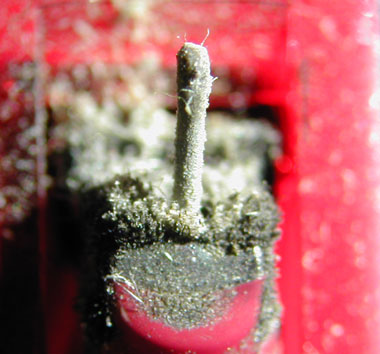
Cartridge before clean up
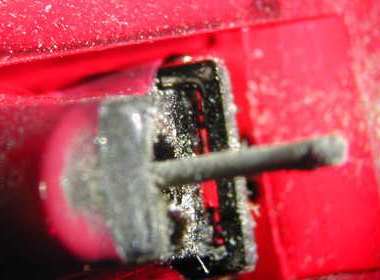
Cartridge after being blown with a can of compressed air
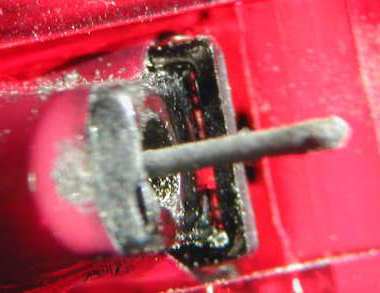
Cartridge after brushing with a long hair brush
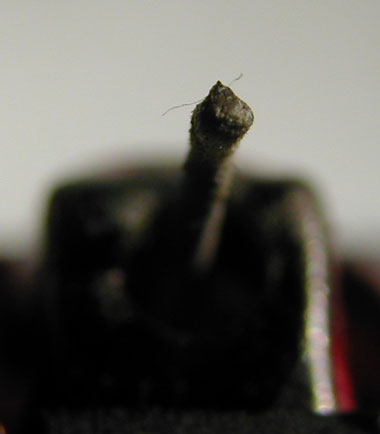
Close up of stylus tip before cleaning with Green Stuff
Tip after cleaning with “Green stuff” paper and then fluid on cottton bud
Picture above is of a clean stylus but with quite a bit of wear. See the flats at the very tip or the top tenth of the stylus. Below image is of a new stylus for comparison.
Maintaining a Clean Stylus
Cleaning cartridges and Stylus tips is not just a ‘quick once over and away you go’. It needs consistency to maintain a clean stylus. There is no recovery from a worn record. Because record deterioration takes place over a period of time, it’s all too easy to miss the vital difference that cleaning will make to preserving long term sound quality.
There are a few misconceptions that surround this area. For example, some think that it’s just the stylus tip that causes damage. Others think that special tip profiles help protect records.
The Lethal Enemies That Can Slowly Destroy the Quality of Your Records
A well maintained cartridge in good condition can be the difference between great sound quality and appalling sound quality. It’s the difference between fast-deteriorating records and those that maintain their quality for 3000 plays.
A clean stylus will cause very little wear on your records. Most damage is incurred through one or more of the following:
- A dirty stylus needle
- An aged cartridge suspension
- A worn stylus
- Dirt on the record
- Poorly set up cartridge
- Poor quality deck or tonearm
If you wish to ensure that your cartridge performs as it should for much longer than normal, it pays to think about the effects of:
A poor quality tonearm – Tonearms which resonate badly or have bearing “chatter” will cause the cartridge to “bounce around” the grooves in ways that they are not supposed to, and cause slow degradation. The difference in surface noise of a record between different tonearms and cartridges is a big clue to how differently a stylus handles the grooves. It would be a mistake to equate low surface noise with high performance but it can be an indicator.
Incorrect tracking force – Some people in attempting to reduce record wear have minimised the specified tracking force for their cartridge. The truth is that this stops the stylus sitting securely in the grooves and actually increases record wear. It’s always best to just stick with manufacturer recommendations.
Cartridge Life and Care
Normal advice says that the life of a cartridge is between 2 to 3 years or 2000 to 3000 hours of use. The truth is that this figure can easily be doubled by applying little known techniques. If you are using a cartridge costing over £300 this represents a big saving over the years.
The life of a cartridge is dependent on 3 factors
- Stylus wear – even diamonds wear down if records are contaminated
- Suspension ageing
- Proper care and cleaning of the stylus tip – an unwitting approach here will reduce the life of many cartridges
Stylus Wear
The thing that causes wear is dirt on records, which acts like an abrasive. Cartridges that are taken care of and played on cleaned records can easily last 5 to 6 years with no detectable diamond wear.
Suspension Ageing
The stylus on a virtually unused cartridge can be perfect but if the cartridge is old, then the suspension can be useless and the performance hugely reduced. Worse still, the suspension tends to stiffen up with age and cause damage to your records. I know this from personal experience of using an aged (high-end) cartridge which proceeded to wreck my record collection one play at a time until I realised what was happening. How much the suspension deteriorates over time, varies a great deal from one manufacturer to the next . The type of material used in the suspension determines performance and ageing. The better suspensions tend to deteriorate more rapidly and 6 years is really the maximum for many. If the wrong cleaning fluid is used or excessive amounts are allowed to get on the suspension, the same problem can occur.
Only the cartridge manufacturer can tell you how long the suspension is likely to last. You can predict that a Dynavector will last up to around 6 years. We cannot speak for others, as manufacturers change their designs and it is impossible to safely keep track on the hundreds of different models on the market.
If Your Cartridge is Damaged or Old
If your cartridge is very old then this article may have raised the question of cartridge change. Once a cartridge’s usefull life has expired there are four main options:
- Order a different cartridge.
- Order an exchange cartridge for your existing model – this is a safe method and saves you 20% on finances providing you are ordering the same brand.
- Order a stylus replacement. This option is only available for budget moving magnet cartridges as a rule, and is only probably worth it on a relatively new cartridge if your cantilever is bent. On an old cartridge there can be a lot of debris that has been “sprayed up”, as the stylus traverses the record. This debris remains in the motor mechanism of the cartridge even if you change the stylus with its suspension. In our view this represents a false economy as an exchange cartridge is not a lot extra and well worth it.
- Find a reconditioning service to re-tip the stylus and replace the cantilever suspension. Many people ask us where they can have their cartridge re-tipped or rebuilt with new suspension. This is a very tricky question as whoever you go to, will not be party to the exact material used in the original cartridge and hence the result of a rebuild can be vastly different from the original. Cartridge manufacturers do not offer rebuilds, they offer exchange. By using a 3rd party it may appear that you are saving money but there is no way of knowing the quality of what you are getting and we have widely varying reports on the results.
